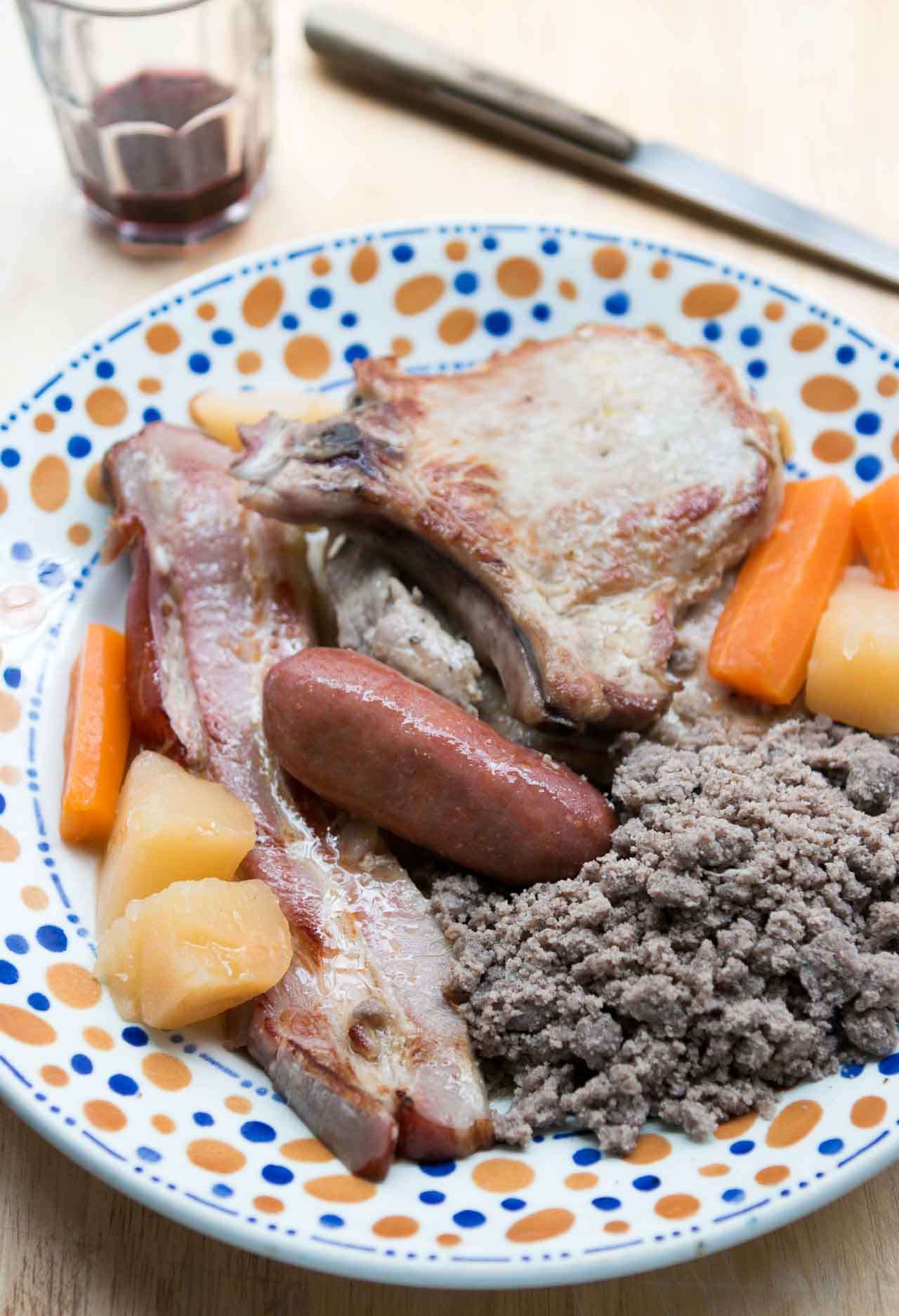
Kig Ha Farz
Adapted from The French Farmhouse Cookbook by Susan Loomis Buckwheat flour is good for people avoiding wheat flour. If you don't eat meat, this can be served with simmered root vegetables, like turnips, carrots, potatoes, parsnips, hard squash, and even some cabbage. If doing so, I would add some herbs or other flavorings to the water, or cook them in vegetable stock. I've linked to some recipes below for making pot-au-feu, the classic meat-based French boiled dinner that kig ha farz is traditionally served with. And I've linked to some places where you can get Japanese soba flour (mixed with wheat), as well, which you may want to track down. To approximate the same thing, you could use 80% whole-grain buckwheat flour mixed with 20% wheat flour. I've also linked to some places after the recipe where you can get farz sacks in France, and elsewhere. You could also place the mixture in the center of a clean, damp piece of cotton cloth about 2-feet square (60 cm). Gather the corners of the cloth and secure them tightly with kitchen string, leaving room for the mixture to expand by one-third.
Ingredients
- 2 large eggs
- 1/2 cup (125ml) whole milk
- 4 tablespoons (60g) melted butter salted or unsalted
- 1 3/4 cups (250g) buckwheat flour (see headnote)
- 1 tablespoon sugar
- 1 teaspoon coarse sea salt
Instructions
- Mix together the eggs, milk, and butter in a large bowl.
- Gradually add the flour, sugar and salt, stirring until smooth.
- Scrape the mixture into a farz bag, a sack made of unbleached muslin specifically for this purpose. Tie it closed, leaving room for it to expand by about one-third.
- Simmer the farz in simmering broth, turning it a few times while cooking, for about 2 hours.
- Drain the sack in the colander very well for 15 minutes. Then take the sack and roll it on the countertop, pressing it firmly back-and-forth, until you can feel the dumpling inside being broken into irregular bits. Continue rolling it on the counter until it's well-crumbled. If it resists being broken up by rolling the sack, open the sack and break the pieces of buckwheat up with your fingers.
Notes
- Serving: Serve the kig ha farz with boiled meats, vegetables, or simply a pat of salted butter.
- Storage: The kig ha farz can be made up to two days in advance and refrigerated. It can be rewarmed in a microwave oven.